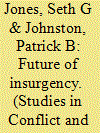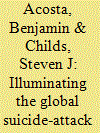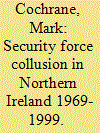|
|
|
Sort Order |
|
|
|
Items / Page
|
|
|
|
|
|
|
| Srl | Item |
| 1 |
ID:
120428


|
|
|
|
|
| Publication |
2013.
|
| Summary/Abstract |
After 9/11 the United States has a significant disconnect between its strategic and tactical efforts against violent global jihadists. Some American leaders and commanders are confusing effectiveness and success, improperly associating tactical disruption of enemy elements with strategic effect. While the country has won some important tactical victories, it is not clear that they are amounting to a strategic impact, or that the gains will last. The situation is complex, with various dynamics influencing America's prosecution of the Long War and its ability to be successful in the long term. This article looks at what those factors are and provides policy makers with tangible recommendations that, if implemented, will place America's counterterrorism efforts on a more strategic trajectory and hold greater promise of lasting impact.
|
|
|
|
|
|
|
|
|
|
|
|
|
|
|
|
| 2 |
ID:
120427


|
|
|
|
|
| Publication |
2013.
|
| Summary/Abstract |
What are key historical trends in insurgencies? And what do these finding suggest about the future of insurgency? We examine four aspects: causes of insurgency, outside support, strategies, and tactics. Based on an examination of quantitative and qualitative data, we make several arguments about the future. China could become increasingly involved in supporting insurgencies and counterinsurgencies if its economic and military power continues to increase and its global interest expands. In addition, insurgent groups will likely require less time to achieve high levels of sophistication for improvised explosive devices and other asymmetric tactics, which we expect they will use against more powerful mechanized counterinsurgent forces. We also expect that insurgent groups may take advantage of commercially-available technology to communicate, distribute propaganda, and recruit individuals. In addition, insurgents will likely make further use of encryption, anonymizing services, location-masking tools, and other related technologies to protect their online activities.
|
|
|
|
|
|
|
|
|
|
|
|
|
|
|
|
| 3 |
ID:
120429


|
|
|
|
|
| Publication |
2013.
|
| Summary/Abstract |
This article examines the contemporary phenomenon of suicide attacks by fusing network analysis and time-series econometrics. We find that a global network of militant organizations drives the reproduction of the suicide-attack phenomenon, and brokers within the network mark the primary perpetrators and diffusers of the tactic. The introduction of a fourth level of analysis of political violence demonstrates that network connections between organizations form a system that perpetuates suicide attacks. An organization-level analysis reveals that ideological congruence facilitates the establishment of network connections. As exemplified by the wide range of employers and targets, and moreover by the generation of an autogamous function, contemporary suicide attacks represent a unique sociopolitical phenomenon. Accordingly, organizations that use the tactic warrant a distinct classification.
|
|
|
|
|
|
|
|
|
|
|
|
|
|
|
|
| 4 |
ID:
120430


|
|
|
|
|
| Publication |
2013.
|
| Summary/Abstract |
In order to thwart and prevent terrorism the State is compelled to use all of the covert capabilities at its disposal in order to protect the society it serves. One of its most effective weapons is the use of human intelligence. Often acquired through secret relationships with terrorists or those with the ability to access preemptive intelligence. This important work is contentious for any democratic society as such practices and relationships, should they become known, inevitably beg the question-How far is it permissible for the State to go? A case study of State efforts to combat terrorism in Northern Ireland presents the moral, ethical, and legal dilemmas encountered and the propaganda opportunity such activity presents its detractors and critics. This article will identify key aspects related to the intelligence war and the development and creation of the concept of "collusion," a subjective issue, and one that has no legal definition.
|
|
|
|
|
|
|
|
|
|
|
|
|
|
|
|
|
|
|
|
|